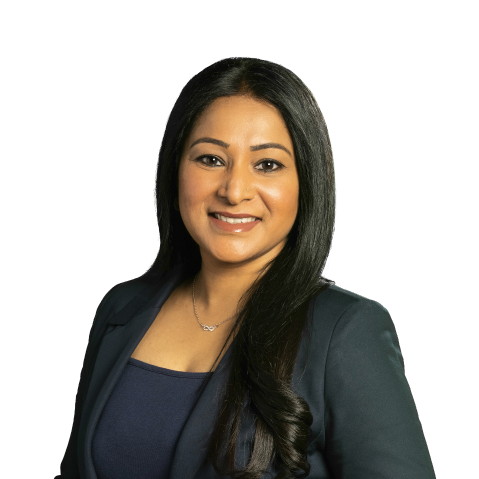-
Are you in Other? If not, please update your location below.
-
Other
- Services
- Class Actions
- No Win No Fee
- Our Firm
- Resources
- Contact Us
If you’ve been injured or diagnosed with a condition that prevents you from returning to work, you may be eligible for Total Permanent Disability (TPD) compensation. This financial support can help cover essential expenses like medical bills, ongoing rehabilitation, mortgage payments, daily living costs, and other financial burdens that become difficult to manage without your regular income.
For many Australians facing the life-altering effects of a total and permanent disability, the TPD claims process can feel daunting. Whether your disability stems from a workplace accident, a severe illness, or a traumatic event, securing TPD compensation is critical for ensuring financial stability.
Navigating the claims process with insurers can be complex, but don’t worry—we’re here to guide you. In this article, we’ll explain what a TPD claim is, the key steps involved in making a claim, and what compensation you might be entitled to.
Quick Links
Total and Permanent Disability (TPD) insurance provides vital financial protection for Australians who are no longer able to work due to illness or injury. Most commonly included as part of a superannuation fund’s life insurance policy, TPD coverage can also be purchased as a standalone policy through private insurers.
According to the Australian Securities and Investments Commission (ASIC), around 9 million Australians have TPD coverage, with 86% of these policies held through their superannuation funds. Despite the widespread availability, many individuals are unaware of the protection they have, or they find themselves struggling with the complexities of the claims process.
Coverage source
While most Australians hold TPD insurance through their superannuation, you may have multiple policies if you’ve switched jobs or opened new super accounts. In some cases, clients have discovered additional policies, increasing the amount of income protection they’re entitled to.
Payment type
TPD benefits are typically paid out as a lump sum, providing immediate financial relief. This lump sum can help cover urgent expenses, such as modifying your home or purchasing medical equipment, while also allowing you to establish a sustainable financial future.
Purpose of TPD insurance
The lump sum from a TPD claim can be used for several critical needs, including:
Multiple claims
Many people don’t realise that you can have multiple claims running simultaneously. For instance, if you’re eligible for a Work Injury Damages claim, you can pursue this alongside your TPD claim. This could result in a larger total payout, offering additional financial support.
Eligibility for a Total and Permanent Disability (TPD) claim depends on several important factors, and understanding these can play a crucial role in whether your claim is successful. Many of our clients initially believed they weren’t eligible for a TPD claim, only to discover they were entitled to compensation after consulting with a lawyer.
The key criteria for eligibility include:
The range of qualifying conditions is broader than many people realise. Here’s a comprehensive list based on successful claims we’ve handled:
Physical injuries
Mental health conditions
Chronic illnesses
Learn more about filing TPD claims for depression and mental health.
TPD payouts in Australia generally range from $60,000 to $500,000, depending on factors like:
The severity of your injury or illness plays a crucial role in determining your TPD payout. TPD claims assessors evaluate several factors when assessing the extent of your disability.
Your ability to return to your previous occupation | If your condition prevents you from performing your regular job duties, it may significantly impact the size of your payout. |
Your ability to work in any other capacity | Assessors will determine if you’re able to perform other types of work for which you’re reasonably qualified. If you’re unable to work in any role, the payout may be higher to reflect the long-term loss of income. |
The nature of the disability | Disabilities resulting from the loss of a limb, eyesight, hearing, or other critical senses can result in higher payouts, as they have a more profound impact on your ability to work and live independently. |
Ultimately, the more severe the disability, the higher the potential payout, as the claim will take into account not only your lost wages but also the broader impact on your quality of life and future employment prospects.
Understanding the type of TPD insurance you have is crucial for a successful claim. Each type comes with specific criteria that can impact your eligibility and the likelihood of a payout.
There are three main types of TPD coverage, each with different requirements.
Own Occupation TPD Insurance
This provides coverage if you’re unable to return to your specific occupation due to injury or illness.
Any Occupation TPD Insurance
This coverage applies if you cannot work in any occupation suited to your education, training, or experience, regardless of the specific role you once held.
Non-Occupational TPD Insurance
This applies when you can no longer perform basic daily living activities due to a disability, rather than being unable to work.
Making a successful TPD claim requires careful attention to detail and a thorough understanding of the process. Through our extensive experience handling thousands of TPD claims, we’ve developed a comprehensive approach that maximises our client’s chances of success.
Let’s walk through each step of the process.
The success of your TPD claim begins with a comprehensive assessment of your situation and coverage.
Confirm your coverage details
Start by contacting your superannuation fund or insurer to confirm your TPD insurance coverage. Many clients are surprised to discover they have multiple TPD policies across different super funds, particularly if they’ve changed employers over the years. You might also be eligible for coverage under different policies that you weren’t initially aware of.
Review your policy and claims forms
Request and carefully review your policy documents and claims forms. It’s crucial to focus on how your policy defines “total and permanent disability,” as this definition will form the foundation of your claim. Different policies may have slightly different criteria, so understanding the specific requirements is vital to formulating an effective strategy.
Verify the validity of your insurance
Check that your TPD insurance was valid at the time of the injury or illness and that it remains valid now. Policies have specific coverage periods, and they typically don’t provide retroactive coverage. In cases of long-term or progressive conditions, such as chronic pain or illness that has worsened over time, determining the start of your disability can be complex. This is why it’s crucial to consult with a TPD lawyer to clarify any uncertainties about when your condition legally began.
The documentation phase is a critical stage of your TPD claim, as the quality and comprehensiveness of the evidence you provide can significantly influence the outcome. The more thorough and detailed your supporting documentation, the stronger your claim will be.
Medical evidence
Your medical documentation should tell a clear and comprehensive story about your condition and its impact on your life.
We recommend gathering:
In a recent case, we helped a client with chronic fatigue syndrome strengthen their claim by obtaining specialised reports from both their immunologist and a neuropsychologist, providing compelling evidence of both the physical and cognitive impacts of their condition.
Employment documentation
Your employment history needs to demonstrate both your pre-disability work capacity and the impact of your condition on your ability to work. Gather:
Additional supporting evidence
We’ve found that supplementary evidence can often make the difference between acceptance and rejection. Consider including:
When we review rejected claims, certain patterns emerge. Here are some common reasons for rejection and how to address them.
Rejection reason | Solution |
Insufficient medical evidence | Obtain comprehensive reports from specialists |
Not meeting policy definitions | Carefully align evidence with policy requirements |
Pre-existing condition exclusions | Prove the current disability is unrelated or significantly different |
Incomplete documentation | Use a comprehensive checklist and regular reviews |
Our dedicated TPD claims team offers comprehensive support throughout your claim journey.
A free initial consultation to assess your case and provide expert guidance on your eligibility
With our support, you can focus on your recovery while we handle the complexities of your TPD claim.
In 2022, John required two more surgeries, bringing his total at the point to five surgeries. This marked a critical point in his case. We advised John to wait until after these surgeries to file his Total Permanent Disability (TPD) claim, a strategy that proved crucial given the complexities of his situation.

This image does not depict our actual client.
While there’s typically no strict time limit, certain considerations apply:
Yes, you can claim on multiple policies if:
You have several options:
The process of a TPD claim typically takes several months to complete. Here’s an overview of the key stages:
Overall, from start to finish, the entire process can take anywhere from 6 to 8 months, depending on the complexity of your claim, the need for additional information, and any delays that may arise.

Angelica has a passion for pursuing justice and fighting for the rights of her clients. She sees it as a privilege to be entrusted as a person’s advocate and voice. She takes comfort in knowing that her work impacts not only on the lives of her clients but also everyone else around them.
In the spirit of reconciliation GMP Law acknowledges the Traditional Custodians of country throughout Australia and their connections to land, sea, and community. We pay our respects to their Elders past, present, and emerging, and extend that respect to all Aboriginal and Torres Strait Islander peoples today.

Your location is currently:
Please wait while you are redirected to the right page...